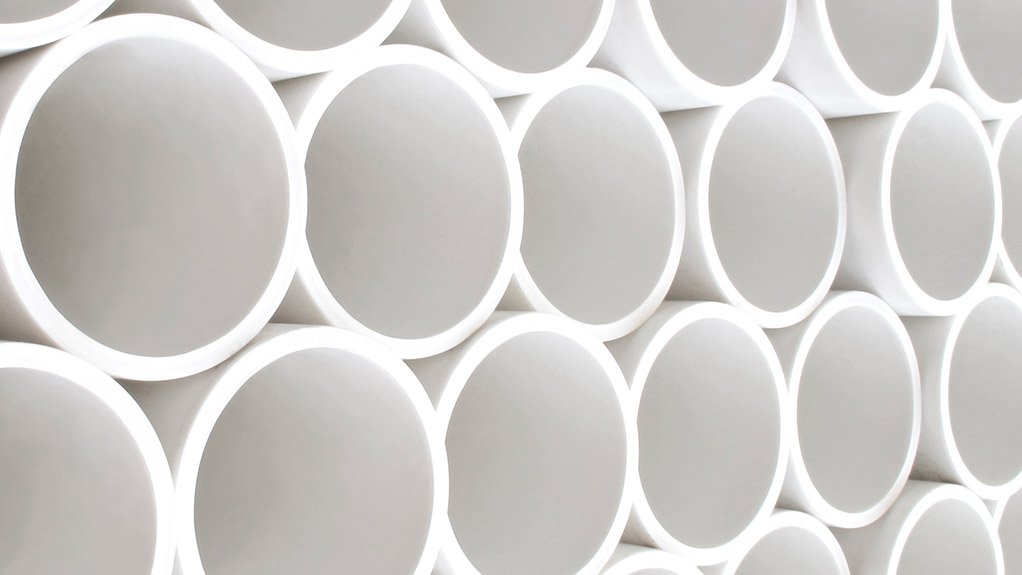Local vinyls representative body the Southern African Vinyls Association (Sava) has released the results of its first-ever polyvinyl chloride (PVC) recycling survey, which details the state, scope and size of PVC recycling currently taking place in South Africa.
The survey, published in October, provides a detailed overview of the flow of PVC products in South Africa, the state of the PVC recycling industry and recyclate markets. “It is also a valuable knowledge tool that will assist us with forward planning and setting targets for end-of-life solutions and it supports Sava’s Product Stewardship Programme,” says CEO Delanie Bezuidenhout.
PVC is a key product for the chemicals industry and, along with polypropylene and polyethylene, it is one of the most widely produced plastics. Bezuidenhout notes that, currently, about 40-million tons of PVC is produced worldwide. “However, as we are using more plastic products, we are also creat- ing more plastic waste and the 2008 promulgation of the National Environmental Management: Waste Act has emphasised recycling and the reduction of waste materials to landfill,” she says.
In 2014, a total of 32 397 t of PVC was imported – mainly in powder form. This predominantly accounts for emulsion PVC used in coatings, dip moulding and slush moulded applications. Local PVC producer, petrochemicals company Sasol, only produces suspension PVC, which is why small quantities of rigid and flexible compounds were also imported during this period.
Local PVC Recycling
PVC is one of the most widely used polymers in the world and has the longest history of recycling among plastics and the most advanced level of mechanical recycling, says Bezuidenhout.
However, PVC competes against inexpensive gas and oil used to make virgin material, which is compounded by issues such as additives used and exposure to heat and contamination, which makes PVC recycling even more challenging. Bezuidenhout adds that, despite these challenges, the volumes recycled locally since 2009 have increased by 16% to 18 488 t in 2014.
In South Africa, there are currently about 40 PVC recyclers who procure separated and sorted recyclables from various sources, including collectors. During the first step of processing, additional sorting is done and any unwanted and unsuitable material is returned to landfill. The remaining material is then processed and sold to convertors as a raw material.
However, owing to low volumes of PVC recyclable material, few of the PVC recyclers only recycle PVC. On the contrary, most PVC recyclers also recycle one or two other materials.
Bezuidenhout reveals that Gauteng has the largest number of PVC recyclers and also the largest volumes of PVC recycled in 2014, namely 69%. On the opposite end of the scale, the North West province has six recyclers, though they managed to recycle 726 t per recycler versus the 670 t per recycler in Gauteng. There was only one PVC recycler in the Eastern Cape, one in Limpopo and one in Mpumalanga in 2014.
Influential Factors
The potential for PVC waste recycling is largely determined by the degree of contamination, which is the degree to which PVC is mixed with other material when collected, and the differences in the composition of the collected PVC material itself.
“The amount of recyclable PVC available greatly affects the feasibility of a recycling system, as it requires a minimum quantity of waste to allow for a technically and economically feasible operation. Further, the geographical area supplying a recycling plant must not exceed a certain size to keep transport distances and associated costs within a reasonable range,” she says.
Owing to these influences, PVC recycling in South Africa is mainly focused on areas where economic profitability is achieved, such as in preconsumer and postconsumer pipe and cable waste.
The majority of other PVC postconsumer waste is landfilled. Low recycling rates of postconsumer PVC waste can also be attributed to relatively low prices of virgin material and inexpensive landfilling costs. Thus, unless legal measures or voluntary agreements are established, the incentives for the recycling of PVC postconsumer waste remains low.
Further, because most PVC products have a long life span, the volume of PVC items entering the waste stream remains small and insignificant. “This situation, however, will change over time as a greater amount of PVC products progressively approach the end of their useful economic lives and slowly begin to increase the volume of the PVC waste stream,” concludes Bezuidenhout.
Edited by: Samantha Herbst
Creamer Media Deputy Editor
EMAIL THIS ARTICLE SAVE THIS ARTICLE
To subscribe email subscriptions@creamermedia.co.za or click here
To advertise email advertising@creamermedia.co.za or click here













